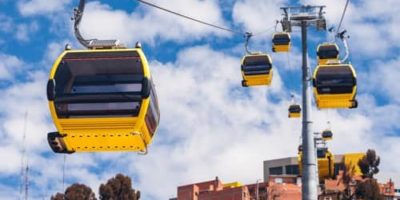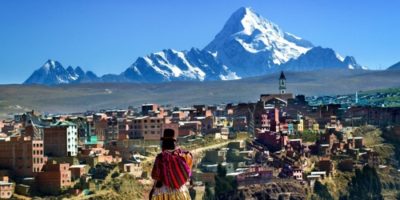Getting to La Paz is like getting to the annual gathering of cab drivers, chauffeurs and transporters. A self-regulated chaos takes over this Bolivian city every morning.
The two directions of 16 de Julio Avenue are filled with old Dodges, they are the “micros”. Next to them the “trufis”, which are shared cars, are crowded. And meanwhile the “minis” try to make a hole between the cabs shouting from the window the destinations to which they travel.

Minis, buses, truffles and cabs are fighting for passengers on the streets of La Paz.
The truth is that aside from the chaos of the city, in recent years great improvements have been made to facilitate the movement of the people of La Paz.
Public transportation in the Bolivian administrative capital has undergone successive changes and improvements in recent years, allowing for much more freedom of movement in La Paz. On the one hand, there is the cable car of La Paz, which has managed to effectively connect different points of the great city with El Alto.
On the other hand, there are the new and brand-new PumaKatari, designed expressly to face the complicated orography of the city, as well as the Wayna Bus, which joins the extremes of the city of El Alto.
In short, there are several options for moving around in public transport in La Paz. Without a doubt, the best way to get around is to do it as if you were a lifelong paceño, on the same transportation used by the locals.
There are several ways to get around La Paz by public transport, and car sharing is very common.
Here’s my post about the best things to do in La Paz.
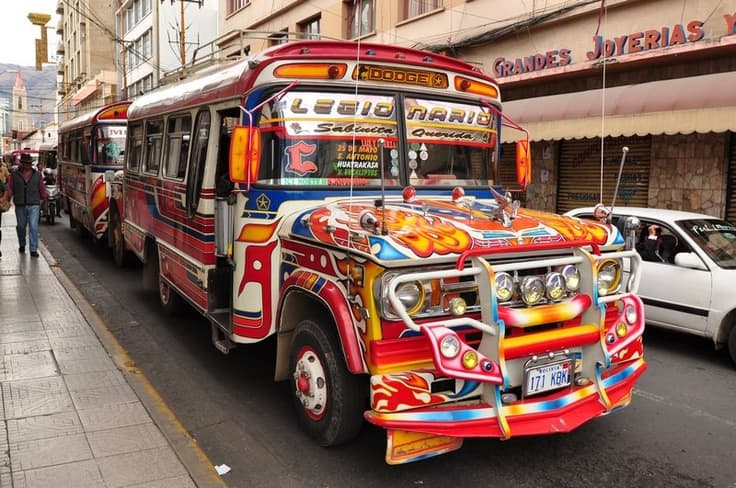
If you haven't booked your hotel yet, you can get the best deals on hotels here.
Contents
Micros
Micros are small buses that travel on a fixed route, and probably the most popular motorized transport in La Paz and all of Bolivia. I got on several of them and the fare was always 1.5 Bolivian pesos, which you pay when you get on.
It is without a doubt the most picturesque of all the transports with which you can move around La Paz. These old and colorful buses of the brands Dodge, Chevrolet and Ford, that in spite of the smoke that they give off have endured without losing too much dignity the passage of the years, inform of their stops with signs in the windshields.
I asked if there was one that would take me to the Killi Killi lookout, and they told me I had to take the lettuce color bus for that. Yellow, navy blue, blue-and-white… The colors determine the route of these “micros”.
In addition to the pre-arranged stops, you can request to get off at any time by telling the driver to stop.
Trufis
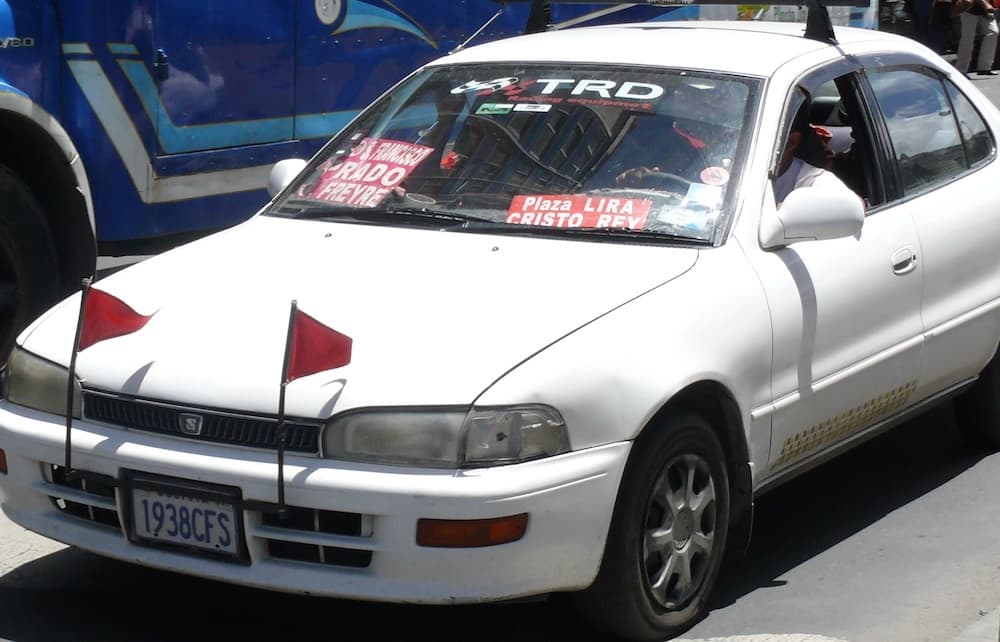
Getting on a turf is a recommended experience if you like to share a seat with the locals and get a little closer to the reality of the transport in the city you visit.
The trufi is a kind of shared cab that stands out from the rest because it usually has little flags on its front bumper. No, it is not a diplomatic vehicle, and although at first sight it may seem like a cab, it is not one either.
In its front part, two people can travel next to the driver, so it can carry a total of 6 people. It is a “trufi”, another of the popular transports in Bolivia and a cheap way to move around La Paz. The “trufis” also have different rates depending on the distance you travel in them, which range from 1.5 to 3 bolivianos.
Minis

The operation of the mini is similar to that of the trufi. It moves along a fixed route and is shared with other passengers.
I would say that it is a kind of private transport regulated by the public authorities, judging by the permit displayed inside, which also specifies the fares per trip. Like the trufi, the price of the mini is between 1.5 and 3 bolivianos, which is usually paid when getting out of the van.
Normally, the mini is filled starting from the rear seats and ending with the front ones. In total, I would say that 12 people can enter, including the driver.
Between the first and second row, in what is supposed to be the aisle, there are some folding chairs that if used, prevent the passage. So when it gets full, and someone in the back rows requests a stop, those in the folding seats must get out of the vehicle to let those who are getting out in the first row in.
To get into one of these, all you have to do is raise your hand. If the screamer does not announce the next stops, it is a sign that it is full, and it will completely pass you by.
Minis To The Airport
This is one of the most important transports if you travel to La Paz on your own, because it can save you a few Bolivian pesos the day you have to leave the city and go to the airport to take a flight.
A normal cab to the airport can cost up to 60 dollars. One of the points where more passengers get on the mini to the El Alto International Airport is the Plaza del Estudiante. So that there are no last-minute surprises, especially when you have to catch a flight, I recommend trying to get into the cab a few blocks before you arrive at this square, so that you don’t find them all full.
This transport to the airport of La Paz cost me 3.5 bolivianos getting into the Plaza Isabel la Católica, which I paid for at the request of the driver’s assistant during the trip. I understand that it can cost a maximum of 6 bolivianos.
Taxis
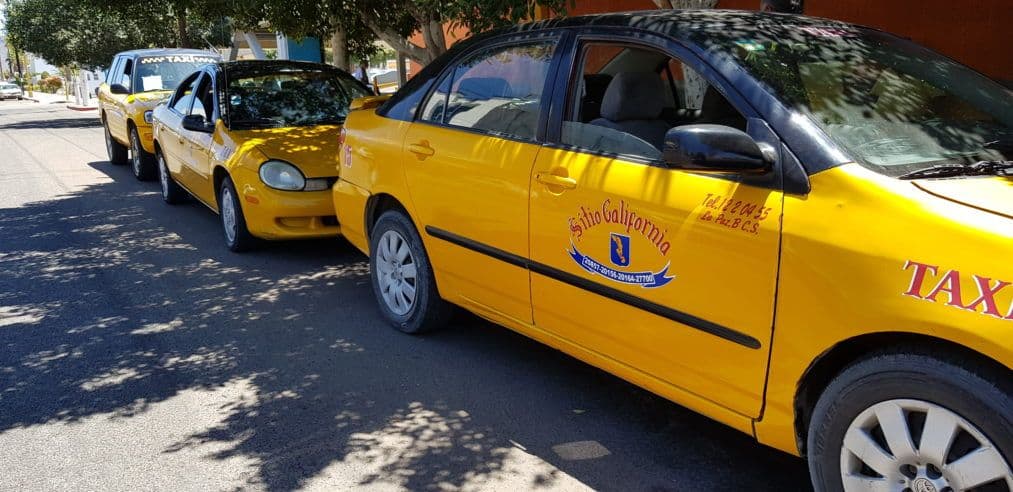
Conventional cabs are not shared with other passengers if you don’t want to, and they take you where you tell them to. In other words, the cab we have known all our lives.
It is of course more expensive than any of the other La Paz transports mentioned so far. It can cost from 10 bolivianos, which is what the shortest cab ride cost me, up to 60, if you want to hire a cab to the La Paz Airport.
From Calacoto to Plaza Murillo, which is from one end of the city to the other, I paid between 20 and 25 bolivianos.
It is a comfortable transport to move around La Paz, and it can be useful if you travel in groups of 4 people. Unlike the trufi, taxis take a total of 5 people (including the driver), 3 in the back and 2 in the front, and therefore can share expenses.
Like most cabs, the money is disbursed when you get off, but don’t forget that the fare must be negotiated before you get on.
Since 2017, Uber is easily available in La Paz. You can read more about Uber in La Paz here.
Express Buses
The express buses are modern buses that have routes throughout La Paz. On their windshields they announce the different destinations to which they travel.
As I understand it, they travel longer distances than conventional buses. There are two lines operated by unions: The 21 (which covers the Mariscal Santa Cruz route, downtown, Rosales and Barrio Pedregal) and the 42 (which covers the stretch between the General Cemetery and Ovejuyo).
After the entrance of the PumaKatari in La Paz, people say that buses and express buses will disappear slowly, so that they will stop being one of the most picturesque ways of moving around La Paz.
PumaKatari
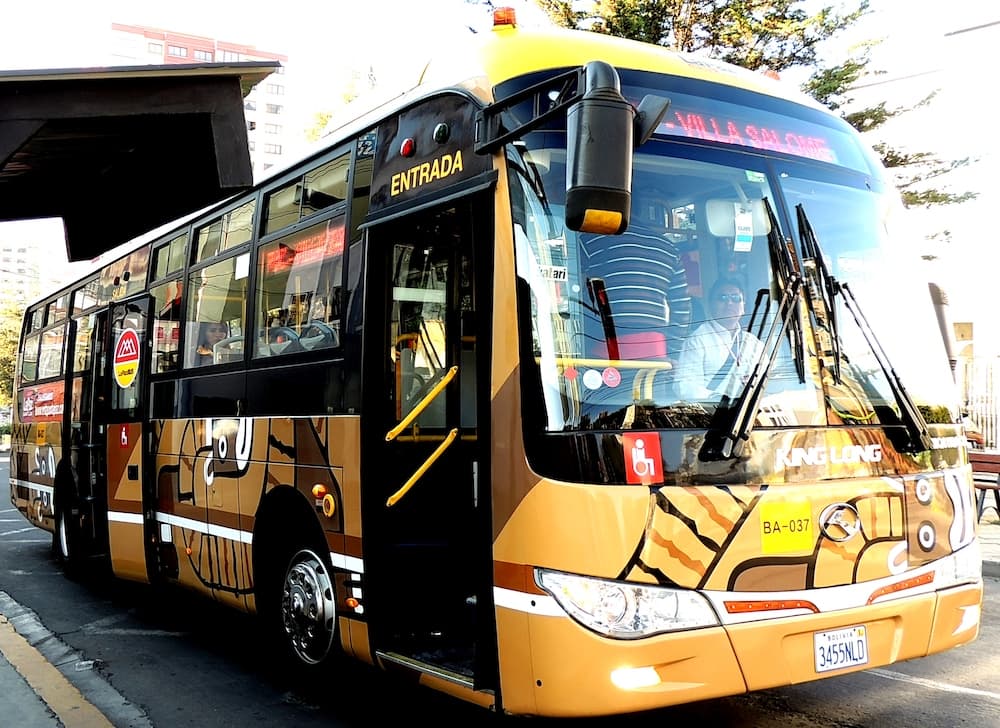
The PumaKatari is the pride of public transport in La Paz, as is the cable car. These buses depend on the Municipal Autonomous Government, while the cable car is administered by the Plurinational Government of Bolivia.
For many years, public transport in La Paz has depended on the service offered by the owners of one or more vehicles with a driving license. These small entrepreneurs are mostly grouped in unions. PumaKatari, is the name of the buses implemented as the first phase of the so-called Integrated Mass Transport System of the City of La Paz, and is administered by the Municipal Transport Service.
The first 61 PumaKatari buses began operating in February 2014. They had been designed to fit the complicated orography and configuration of the streets of La Paz. The buses were manufactured by the Chinese company King Long. “Puma Katari” literally means “Snake Puma”, and the buses have Tiwanaku illustrations that represent this deity to symbolize its dexterity in front of obstacles. The cost of this service varies.
Teleferico
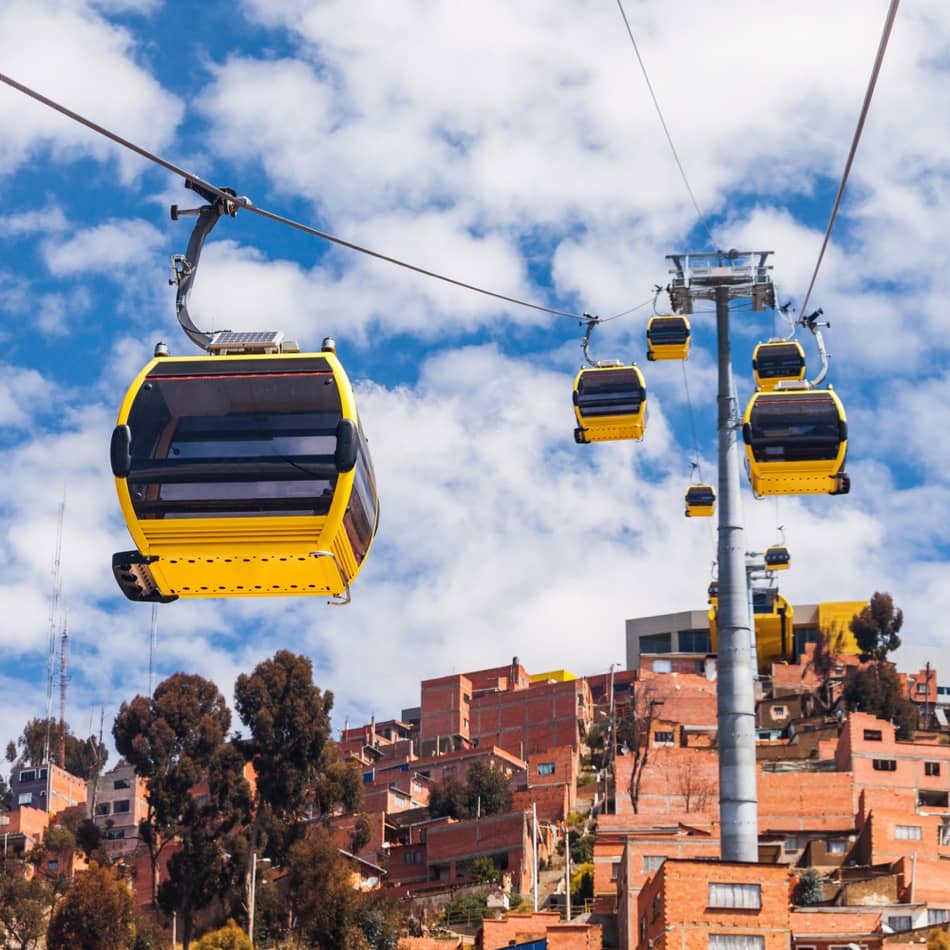
The cable car of La Paz, known by the brand name “Mi Teleférico”, is an ambitious project of the Plurinational Government of Bolivia that in my opinion has had a very positive social impact on the population of La Paz and El Alto, facilitating transit through efficient public transportation, especially among the most disadvantaged.
The construction of this infrastructure was commissioned to an Austrian company and there are currently three cable car lines in operation. The cost of the trip for a tourist is 3 bolivianos, although there are cards for students, the elderly and the disabled (1.5 bolivianos in these cases). I had the opportunity to ride the red and yellow lines and the truth is that it is worth it, because La Paz from a bird’s eye view is spectacular, and also from the viewpoints of El Alto that can be accessed by the cable car.
Yellow Line: Avenida Libertador (La Paz) <–> Avenida Panorámica (El Alto), with intermediate stops.
Red Line: Old railroad station (Avenida Manco Cápac, La Paz ) <–> El Alto (zone 16 de julio, Avenida Panorámica Norte)
Green Line: At Calle 12 de Calacoto (La Paz) <–> Avenida Libertador (passing through Obrajes).
Wayna Buses
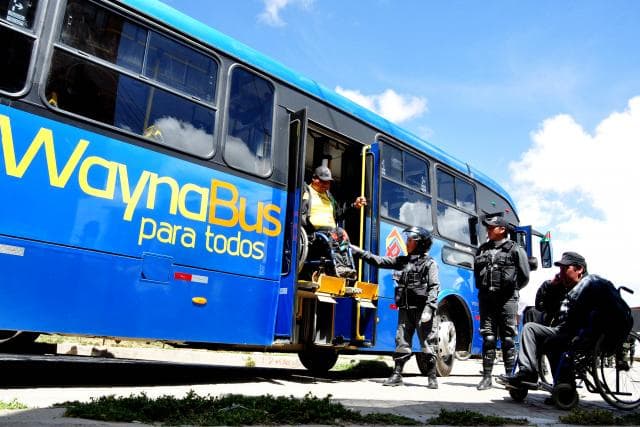
This public transport service is aimed at the inhabitants of El Alto (a municipality that was deannounced from La Paz in 1985), and has been operating since February 2015.
Initially it was called Bus Sariri, but a trademark problem forced the El Alto city council to change the name to Wayna Bus (young bus in the Aymara language).
After being paralyzed in May 2015 due to the change of municipal government in El Alto, Wayna Bus inaugurated two new lines. For the moment, only two routes operate, one in the south and the other in the north of the city, through a circular route. They are the Green or Litoral and Red or Costantera lines, although two other new routes are expected to open soon.
The price varies depending on the route, around 1.5 bolivianos. Without a doubt, this has meant a change in public transport in El Alto.
Bus & Train
Although I have spoken so far about the internal transport of the city, it is worth remembering those public transport services that allow you to move not only within the city, but also outside the limits of La Paz.
On the one hand, there is the bus fleet that operates from the La Paz Bus Terminal, on Uruguay Avenue and not far from the San Francisco Basilica. There are numerous bus connections from La Paz to Cochabamba, Santa Cruz, Oruro, Potosi, Sucre, Tarija, Uyuni, Villazon, as well as to other South American countries.
Practically the entire fleet of buses depends on the company Buses Bolivianos.
Of all the transports in Bolivia, the one that has attracted my attention the most is the ferrobus. It is a light rail vehicle designed for use on low traffic rail lines, which as its name indicates bears similarities to the bus. The use of railbuses has been widespread in Bolivia, as it easily adapts to the local topography, and plays a very important role in some rural areas.
Currently, there are ferry lines from La Paz to Cochabamba, Oruro, Sucre, Potosi and Tarija, among others.
Another option to travel on rails is the train, which in Bolivia depends on the companies Ferroviaria Andina and Ferroviaria Oriental. They maintain, among others, the railroad lines that connect La Paz with Atocha, Tupiza, Villazón, Avaroa and Guaqui.
There is no La Paz-Uyuni line so the best way to reach the salt flat by public transport is by travelling to Oruro by bus and from there to Uyuni by train.
